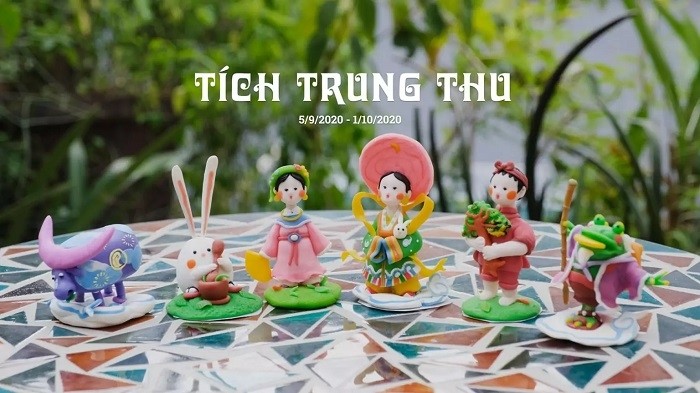Music producer Tri Minh has not only established fame in electronic music but also known for his success in blending folklore music into his musical pieces.
Born to parents who are folklore music artists, Minh was introduced to this genre of music from a very young age.
Since early years of 2000s, Minh started integrating folklore music materials into his musical pieces. In recent years, he has invited his colleagues in folklore music genres such as ‘ca tru’ (ceremonial singing) and traditional music of ethnic groups, to join in his projects.
 |
Pianist Tri Minh and traditional instrumentalists performing at the 2014 Earshot Jazz Festival (Photo: eyeshotjazz.com)
Meanwhile, artisan Dang Van Hau was born in Xuan La Village, Phu Xuyen District, Hanoi, which is famous for the craft of making ‘to he’ (toy figurines made from glutinous rice powder). With the aspiration to revitalise and promote his ancestors’ craft in contemporary life, Hau has exerted efforts to lift ‘to he’ into artworks with higher value.
In 2017, Hau worked with researcher Trinh Bach and Hanoi-based artisan Pham Nguyet Anh to revive many ancient samples of classic ‘to he’, which had once fallen into oblivion.
He has also promoted creativity to create new ‘to he’ samples in order to meeting the increasing demand of customers. including a ‘to he’ collection for the Mid-autumn festival.
In 2020, he coordinated with illustrator Cam Anh to release a project entitled ‘Tich Trung Thu’ (Tale of Mid-autumn festival), which featured six Mid-autumn festival mythical characters. Each collection of the six ‘to he’ samples was sold at 3 million VND, much higher than ordinary ‘to he’ products.
In a similar effort to revitalise folklore culture, painter Le Manh Cuong, founder of KEIG Studio, developed “Than Tich” and Mytheria games, in which he created a mythical world where gods and heroes from different cultures coexist in one space.
In Mytheria, the gods and saints of Vietnam such as Saint Tan Vien, also called Son Tinh, and the legendary ancestors of Vietnam, Father Lac Long Quan and Mother Au Co, will have attractive visuals, personalities, and stories.
 |
Artisan Dang Van Hau (first from left) has exerted efforts to lift ‘to he’ into artworks with higher values. (Photo: To he Viet)
The stories of Tri Minh, Dang Van Hau and Le Manh Cuong were three among examples discussed in seminar entitled ‘Folklore culture in contemporary life’, which was held within the framework of the “Living with Folklore” talk series which were recently organised in Hanoi.
The series was a research and social communication programme co-hosted by Vietnam-Japan University and Vietnam Cultural Initiatives with an aim to gather information and help enhance the audience’s understanding of the different aspects and evolution of folklore in the contemporary era through two key approaches: folklore in the cultural industry, and folklore on digital platforms.
The ‘Folklore culture in contemporary life’ seminar gathered the participation of researchers, experts, and practitioners from the fields of culture, art, and folklore, who discussed ways to keep folklore culture alive in today’s life. They all agreed that increasing youth’s awareness are among key solutions to the issue.
According to Associate Professor Dr. Tran Thi Thanh Tu, Vice Rector of Vietnam-Japan University, under the Vietnam National University – Hanoi, children should be introduced to traditional cultural products at an early young age. She also suggested to integrate folklore culture education into teaching and learning programmes at schools.
From his personal experience, artisan Dang Van Hau recalled that when he was a little boy, he joined local cultural festivals and fairs to explore his village’s traditional craft of ‘to he’ making, which helped him to nurture a love and passion for the ancestors’ traditional culture.
The participants also stressed the need of promulgation of supportive policies from the State, to facilitate the development of folklore culture as well as preferential treatments for folklore artists.
In addition, they shared ideas on collaborations and initiatives to promote the preservation of folk culture, and enhancing people’s experience and practice of folklore culture.
















